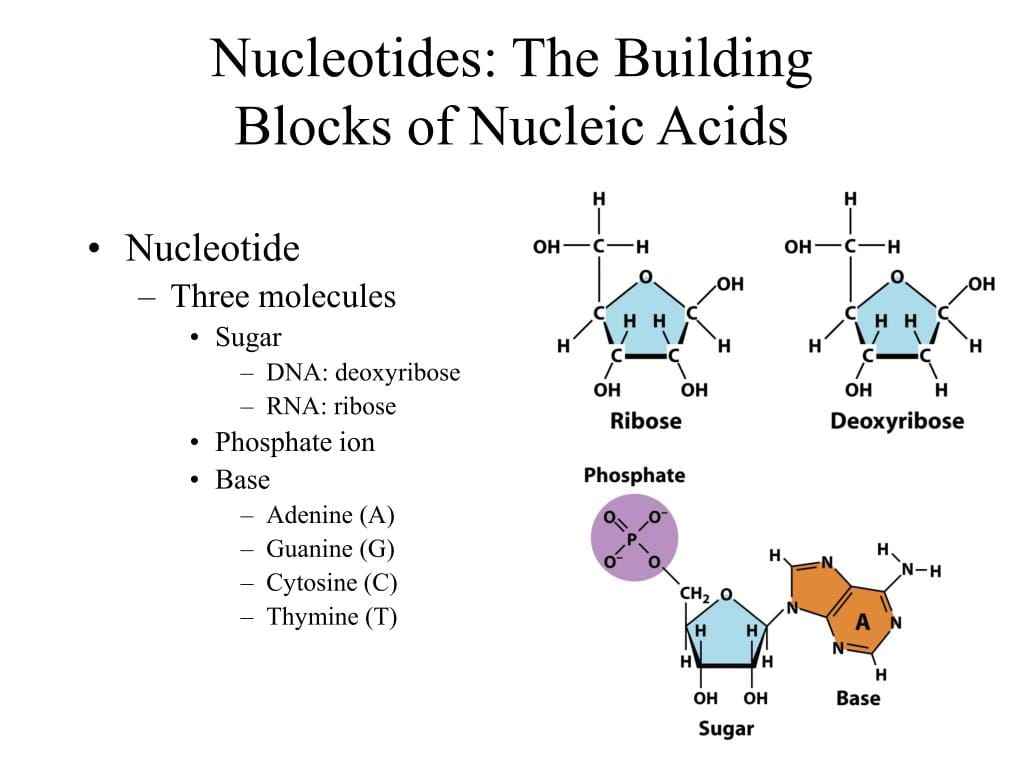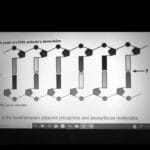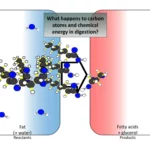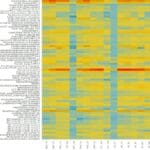Decoding DNA’s Building Blocks: Understanding Nucleotides and Their Classification
Nucleotides: the fundamental building blocks of DNA and RNA, dictating genetic information and driving cellular processes. Imagine them as the letters of life’s alphabet, combining to form the complex “words” and “sentences” of our genetic code. Understanding these essential molecules is key to unlocking the secrets of life itself.
Two Main Ways to Sort Nucleotides
Just like sorting LEGOs by shape or color, we classify nucleotides in two main ways: by their sugar type and their base.
1. Sugar Types: The Foundation
Nucleotides have a sugar backbone, the foundation of their structure. There are two primary types:
- Ribonucleotides: These contain ribose sugar and are the building blocks of RNA. RNA acts as a temporary copy of DNA’s instructions, used to build proteins.
- Deoxyribonucleotides: These contain deoxyribose sugar (ribose missing one oxygen atom) and are the exclusive building blocks of DNA. DNA serves as the long-term storage of genetic information.
2. Nitrogenous Bases: The Information Carriers
Attached to the sugar is a nitrogenous base, the information carrier of the nucleotide. These bases are categorized into two groups based on their structure:
- Purines (The Double-Ringers): These bases have a double-ring structure.
- Adenine (A): A crucial base for both DNA and RNA.
- Guanine (G): Another essential base found in both DNA and RNA.
- Pyrimidines (The Single-Ringers): These bases have a single-ring structure.
- Cytosine (C): Present in both DNA and RNA.
- Thymine (T): Found exclusively in DNA.
- Uracil (U): Found exclusively in RNA, essentially replacing thymine.
Naming Nucleotides: A System for Clarity
Nucleotides are named based on their sugar and base components. For instance, “deoxyadenosine monophosphate” (dAMP) tells us the nucleotide contains deoxyribose, adenine, and one phosphate group. The “monophosphate” refers to the phosphate group, which acts as a connector between nucleotides.
| Abbreviation | Full Name | Sugar | Base | Found in |
|---|---|---|---|---|
| dAMP | Deoxyadenosine monophosphate | Deoxyribose | Adenine (A) | DNA |
| CMP | Cytidine monophosphate | Ribose | Cytosine (C) | RNA |
| dGMP | Deoxyguanosine monophosphate | Deoxyribose | Guanine (G) | DNA |
| UMP | Uridine monophosphate | Ribose | Uracil (U) | RNA |
| TMP | Thymidine monophosphate | Deoxyribose | Thymine (T) | DNA |
Why Does Classification Matter?
Understanding nucleotide classification is fundamental to grasping how life operates at its most basic level:
- DNA Replication: The specific base pairing (A with T and G with C) ensures accurate DNA replication.
- Transcription: Nucleotide classification helps us understand how DNA’s code is transcribed into RNA.
- Translation: The sequence of nucleotides in RNA dictates the amino acid sequence, which determines protein structure and function.
Current research continues to explore the intricacies of nucleotides and their roles in various biological processes, suggesting our understanding of these foundational components is likely to evolve. Scientists are investigating nucleotide interactions and their implications for gene expression, disease development, and potential therapies.
Beyond the Basics: Nucleotide Classification and Its Role in Genetic Processes
Nucleotides are far more than just building blocks; they are the code of life itself. Classifying these essential molecules allows scientists to decipher this code and understand how variations can lead to differences in biological function and even disease.
The Multifaceted Role of Nucleotides
Nucleotide classification is essential for understanding the distinct roles of DNA and RNA. DNA, the blueprint, and RNA, the construction worker’s instructions, both rely on nucleotides but have different functions. Furthermore, nucleotides are involved in cellular communication, energy production, and metabolic reactions.
Unlocking Therapeutic Potential
By classifying and understanding the specific types of nucleotides involved in a disease, scientists can develop targeted treatments. This classification system also aids in genetic engineering, allowing for modifications to nucleotides for a variety of purposes.
Some experts believe that further research into nucleotide classification may unlock even deeper secrets about life itself, from aging to immune responses. Ongoing studies continue to explore the impact of nucleotide changes on various biological systems.
The Nucleotide Code: How These Tiny Molecules Shape Life’s Complexity
How to Identify Nucleotide Building Blocks: A Guide to Structures and Names
Each nucleotide, without exception, is composed of three crucial parts:
- A Nitrogenous Base: This defines the nucleotide’s identity (adenine, guanine, cytosine, thymine, or uracil).
- A Five-Carbon Sugar: This forms the backbone: deoxyribose in DNA and ribose in RNA.
- A Phosphate Group: This provides the energy required for cellular processes.
Purines and Pyrimidines: The Double and Single Rings
Nitrogenous bases are further classified based on their structure:
- Purines (Double-Ringed): Adenine (A) and Guanine (G).
- Pyrimidines (Single-Ringed): Cytosine (C), Thymine (T), and Uracil (U).
This difference is important as it dictates how bases pair up in the DNA double helix (A with T and G with C).
Sugars: Ribose vs. Deoxyribose
The sugar component distinguishes DNA from RNA. Deoxyribose (in DNA) lacks an oxygen atom on the 2′ carbon compared to ribose (in RNA). This subtle difference likely contributes to DNA’s greater stability.
Naming Nucleotides: Breaking Down the Code
Nucleotide names follow a logical system: base name + sugar prefix + phosphate suffix. The sugar prefix “deoxy-” indicates deoxyribose (DNA). The phosphate suffix signifies the number of phosphate groups. For example, deoxyadenosine monophosphate (dAMP) indicates adenine, deoxyribose, and one phosphate.
| Base | Sugar | Phosphate | Nucleotide Name | Nucleic Acid |
|---|---|---|---|---|
| Adenine (A) | Deoxyribose | Mono | Deoxyadenosine monophosphate (dAMP) | DNA |
| Guanine (G) | Ribose | Mono | Guanosine monophosphate (GMP) | RNA |
| Cytosine (C) | Deoxyribose | Mono | Deoxycytidine monophosphate (dCMP) | DNA |
| Thymine (T) | Deoxyribose | Mono | Deoxythymidine monophosphate (dTMP) | DNA |
| Uracil (U) | Ribose | Mono | Uridine monophosphate (UMP) | RNA |
Ongoing research explores the intricacies of nucleotide interactions and their function. Much remains to be discovered, and our current understanding may evolve.
Purines vs. Pyrimidines: Unraveling the Building Blocks of DNA & RNA
The Core Difference
Purines (adenine and guanine) and pyrimidines (cytosine, thymine, and uracil) are the fundamental components of DNA and RNA. Their core difference lies in their structure: purines have a double-ring structure, while pyrimidines have a single ring. This seemingly small difference is crucial for the accurate storage and transfer of genetic information.
The Importance of Pairing
The precise pairing of purines and pyrimidines (A with T/U and G with C) through hydrogen bonds ensures the stability of the DNA double helix. This specificity is essential for faithful DNA replication and transcription.
| Base Type | Base Name | Pairs with | Found in |
|---|---|---|---|
| Purine | Adenine (A) | Thymine (T) or Uracil (U) | DNA & RNA |
| Purine | Guanine (G) | Cytosine (C) | DNA & RNA |
| Pyrimidine | Cytosine (C) | Guanine (G) | DNA & RNA |
| Pyrimidine | Thymine (T) | Adenine (A) | DNA only |
| Pyrimidine | Uracil (U) | Adenine (A) | RNA only |
Beyond DNA and RNA
Purines and pyrimidines are crucial beyond their role in DNA and RNA, playing key roles in energy transfer (e.g., ATP) and cellular signaling (e.g., cAMP).
Ongoing research continues to uncover the complexities of these molecules, suggesting their influence is vast and vital for life. Studying purines and pyrimidines is crucial for understanding genetic mutations, disease mechanisms, and potential drug targets. For a visual representation of molecular bonding, see our SCN Lewis structure. Practice balancing chemical equations with our stoichiometry worksheet.












